Experts say if you want to be effective in driving, you have to watch your back more than your front. Hence, when you learn to drive a car, your instructor tells you to adjust the mirrors before doing anything else.
Adjusting your rearview mirror is key because there are some blind spots you have to deal with. You need to be very clear that your tail is clear before you make a turn or change your lane.
In this guide, we will tell you to get rid of these blind spots when you try to adjust your rearview mirror as soon as you get into your car.
So let’s begin with the process.
Adjust Your Side Mirrors First
It’s never a good idea to adjust while driving. So adjust your mirrors before you start driving. According to NHTSA, a lot of accidents occur due to distracted driving.
You have to adjust your side mirrors first before you start working on your rear-view mirror. To make sure you don’t have to deal with any blind spots, use your rearview mirror along with your side mirrors.
Lean towards your left to adjust your side mirror
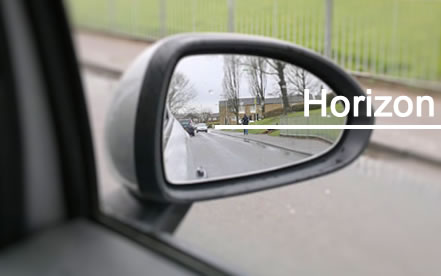
(From driving test tips)
Begin by leaning your head towards the driver’s window on your left. If your vehicle has a conventional mirror instead of the contemporary electrical side mirror, adjust it so that you can see the side of your car. The view should cover the entire mirror.
Now start adjusting until you see the rear quarter panel, which is the back end of your car. When you do it correctly, the rear end of your car will cover one-third of your mirror view.
Lean Towards the Right and Adjust the Other Mirror
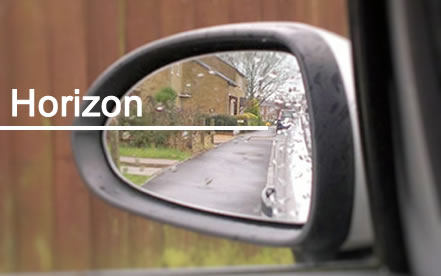
(Iamge from drivingtesttips)
Turn your attention to adjusting the other side mirror. Make sure your head should be close to the centre of your vehicle. Do this as much as you can without leaving your vehicle.
From here, try to position the right mirror, so you see your vehicle’s rear end in the mirror on the passenger side. Just like what you did with the side mirror on your side, make sure the other side of your vehicle is only covering one-third of the view in the mirror.
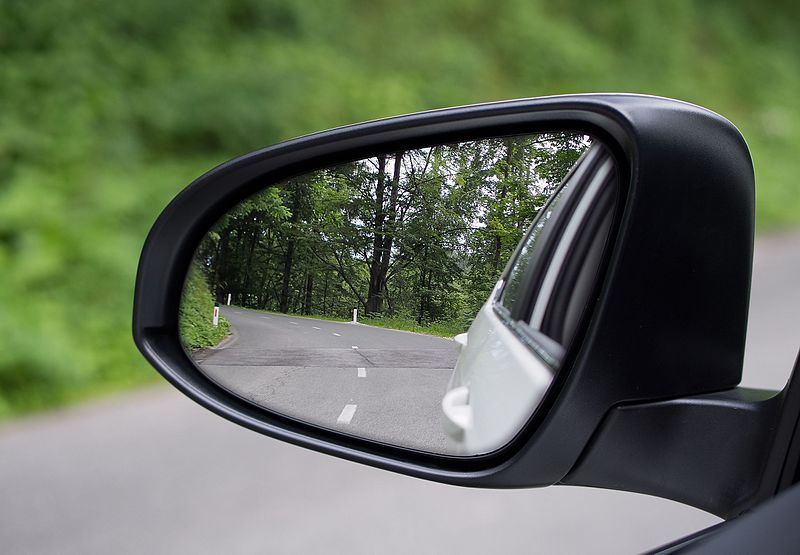
(Iamge from Wikipedia)
It’s Time to Adjust the Rear View Mirror in the Center
Now, get back to your position in your seat like you normally sit while driving. Make adjustments to the rearview mirror so you can see all your rear windows. You must not tilt the side mirror towards either side to have a better view of the traffic from the rear window.

The purpose of this rearview mirror is to compensate for what your side mirrors can’t show. You should use your rearview mirror to compensate for the side mirror you have adjusted correctly.
Double Check that Removal of Blind Spots
Check All the Adjustments from Your Normal Seated Position while Driving
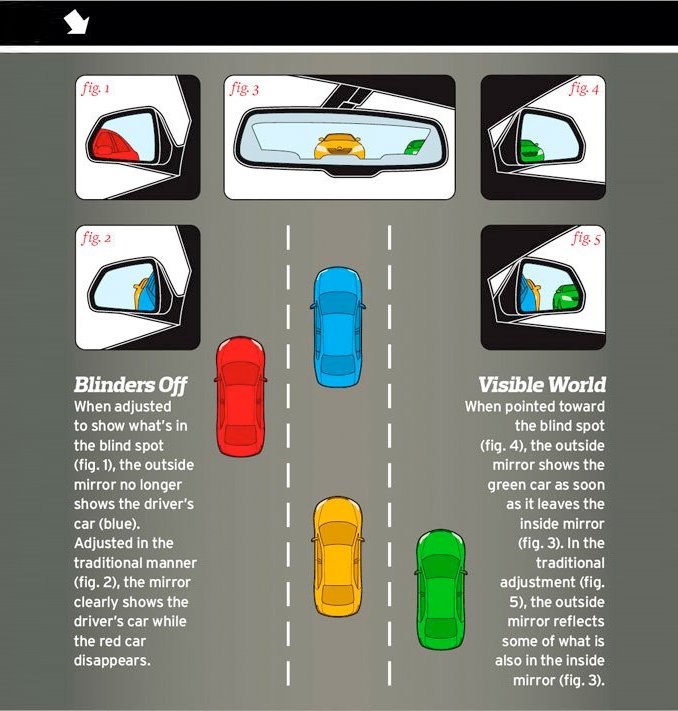
(Iamge from dickscottblog)
You don’t adjust all your mirrors to see your car from both sides. You have to adjust them in a way that you get a wider view of the traffic that surrounds you. If you see your car’s sides in either of your side mirrors, follow the above-mentioned steps to properly adjust them. In most cases, you will adjust them in a way they point more outwards.
Check the view of the side mirrors after adequate adjustment.
When you have properly adjusted your side mirrors, you will see more lanes on the road on your side. It will allow you to keep an eye on the cars coming up on you from behind.
You can also visually follow them and maintain a safe distance. Your side mirrors are directly playing an important role to eradicate any blind spots when you are viewing in your rearview mirror.
You might have to quickly see it through the window for added safety right before you change the lane. You can see other vehicles or objects on your side or approaching you from behind.
Check the transitions of objects from the rearview mirror to side mirrors.
Most people forget to eradicate any blind spots. The view from the rearview mirror to the side mirrors should be smooth, and there shouldn’t be any gap.
You need to pay attention to any vehicle passing you by. View them in your centre mirror and then see them in your corresponding side-view mirror. The transition of the view should be smooth.
Ensure the vehicle passing by you should appear on your side mirror as soon as it leaves the central mirror. This transition should be smooth and confirm the elimination of any blind spots.
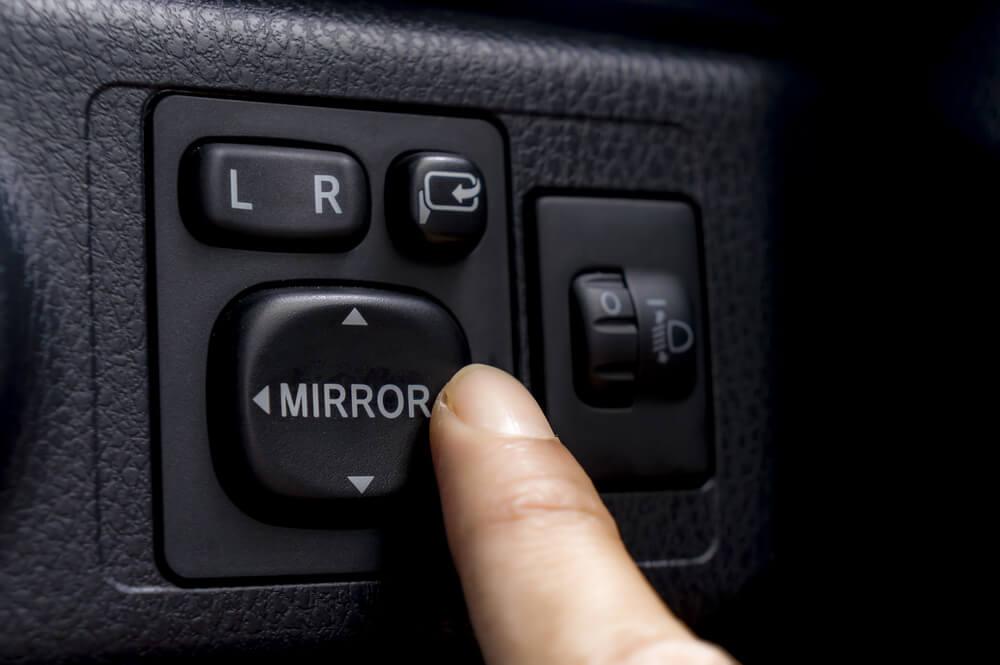
(Image from driving-tests)
If there is some pause between the vehicle leaving your centre mirror and its appearing in the side mirror, you have to make some adjustments because of the blind spot in your rearview.
Have a look at this video for a quick reference,
Final Word
Your rearview mirror on the centre works in tandem with your side mirrors. They work together to provide you with a full view of what’s going on behind your car. Therefore, you have to constantly check all mirrors and see if any of them requires any adjustments.
You just need to have a glance to notice everything behind you rather than have an extended look. Any prolonged stares can distract you from your front view, which can be hazardous. You need to peek at each of these mirrors every 10 seconds at least. Frequently, looking behind will allow you to draw a mental picture of the cars behind you to maintain your lane or turn accordingly.

